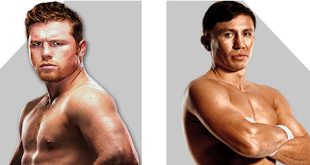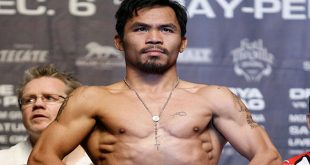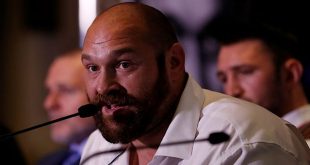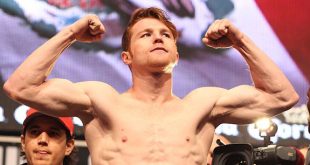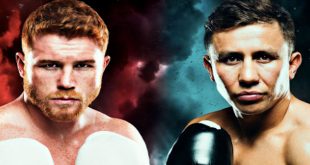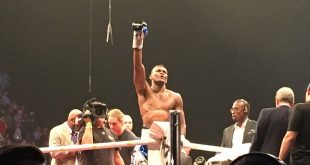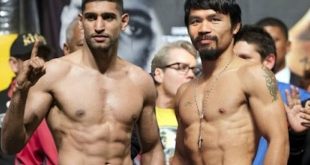Recap and Analysis of the Recent Televised Fights in the Bantamweight and Super Bantamweight Divisions
After back-to-back weekends of exciting boxing matches, boxing takes a much-deserved rest. There is not another meaningful televised fight until Jermain Taylor versus Kelly Pavlik on September 29, 2007. I do not count the September Fernando Vargas vs. Ricardo Mayorga and Juan Manuel Marquez vs. Rocky Juarez pay-per-views as being meaningful.
The former fight might be interesting, but it certainly has no implications on the future of boxing (unless you are really interested in which one of these fighters will be in line to get schooled by Vernon Forrest). The latter fight should be a fairly one-sided victory for Juan Manuel Marquez.
But forget about the near future. Let’s just savor the recent past.
This past weekend, on HBO, we saw two knockouts. The first knockout was unexpected. Gerry Penalosa won the WBO Bantamweight title by scoring a flash knockout of Jhonny Gonzalez with a perfect counter left hook to the body. Gonzalez could not beat the ten count. At that point in the fight, on my scorecard, I had scored the first round for Penalosa, but had scored rounds two through six for Gonzalez. And Gonzalez was on his way to winning round seven as well.
After the first round, Gonzalez was making the fight look pretty easy. Gonzalez showed impressive foot movement and a variety of punches. Gonzalez’s jab was working and he threw monster left hooks to the body. Despite this excellent display of boxing, this fight showed how quickly things can change and that you can never count out a live opponent.
I labeled this knockout as unexpected based on how the fight was progressing. But, in honesty, the knockout was not totally surprising. All Penalosa does is counter. He hits his opponents with some stiff shots. But Penalosa has no independent offense of his own. He has no jab. He simply preys on his active opponents and waits until they are out of position to counter them.
In my estimation, the best thing that can be said about Penalosa is that, especially for an older and smaller fighter, he has a great chin. He took big shots from Gonzalez and previously Daniel Ponce de Leon. But, for being at that weight level, Penalosa is not an active fighter, merely throwing one punch at a time (most counterpunches). Nonetheless, he is a Champion.
In the main event, Daniel Ponce de Leon blew out the young and overmatched 21 year old Rey Bautista in the first round, retaining his WBO Super Bantamweight belt. Bautista simply was not ready for this fight and should not have been there.
In the ring before the fight, Bautista looked nervous and unconfident. Ponce de Leon, on the other hand, ran out to the ring, ready to bring the action to the kid. And he did. Ponce de Leon threw wide, looping, but fast punches. He also threw some effective fast, straight lefts.
Bautista tried throwing the basic one-two, but could not keep the aggressive Ponce de Leon off him. Ponce de Leon knocked down Bautista the first time with a vicious one-two. After being hit with that, Bautista went sprawling backward, into the ropes, and finally onto the ground. After Bautista escaped the ten-count, Ponce de Leon jumped on his still-dazed opponent, knocking him down again with a flurry of punches. The referee immediately ended the fight, giving Ponce de Leon a technical knockout.
The thing that was impressive to me about Ponce De Leon was his footwork, patience, and balance. Even though he was aggressive and throwing wide punches, he did not get himself out of position and off balance as he did often in his previous Penalosa fight.
Regarding the Penalosa fight, I saw Ponce De Leon easily and clearly winning that fight, although his balance in that bout was terrible and he threw numerous, wild, off-target punches. As for the kid, Bautista, let’s hope he can pull a Rick Ankiel, a former St. Louis Cardinals pitcher who lost all confidence in his pitching when he imploded in the playoffs as a rookie pitcher, but resurrected his career as an outfielder and since being brought up recently has hit three home runs with the Cardinals, and make a comeback.
Now to the Saturday, August 4, 2007 Showtime fights. In the opening match of Showtimes televised event, Celestino Caballero defeated Jorge Lacierva, winning a twelve-round, unanimous decision. I saw no controversy in the result. Caballero clearly won. I admit that two of the judges scores of 116-110 and 116-111 were, in my opinion, off the mark. I scored the fight for Caballero by two points. I thought the third judges score of 115-112 was defensible.
If you saw this fight and scored in favor of Lacierva, turn the sound off and watch it without the commentary of Steve Albert. Wow, that was some of the most biased commentary in favor of one fighter I have ever heard (and I am not quite sure why)! Even Al Bernstein had a hard time balancing out the commentary on this fight because Albert confusingly thought Lacierva was dominating the entire fight.
Lacierva came out strong in the first four rounds, rushing and putting constant pressure on Caballero and landing some wicked left hooks. But for the most part after that, Lacierva was content to fight from the outside and get dominated by Caballero’s jab, and then try and steal the round in the last twenty seconds. Lacierva simply was not in good enough shape to win this fight; he wore himself out going for the knockout in the first four rounds. Furthermore, Lacierva was deducted a point for an intentional foul. \
Coming into the fight, I thought Caballero might be a second coming of Paul Williams, given he is unusually tall, yet is still able to fight in a weight class dominated by much shorter fighters. Caballero was no Paul Williams. In the fight, Caballero’s legs and arms were gangly. He does not (or at least did not in this fight) have the quick foot movement and snap on his punches as does Williams.
However, I was impressed by Caballero’s stamina and determination: he fought the whole fight and came back to win the fight despite coming out flat and being down on the scorecards early.
In the main event, two of the best and most exciting fighters in boxing squared off: Rafael Marquez, the 122 pound champion, against Israel Vasquez in a highly-anticipated rematch. Marquez won the first fight by seventh round TKO.
In the first fight, despite scoring a third-round knockdown of Marquez, Vasquez’s nose was completely broken and battered, and he was forced to stop the fight after the seventh round.
The rematch lived up to all its hype and more, as there was more action than in the first bout. Round three, once again like round three from the first fight, will be a strong contender for Round of the Year. In the end, Vasquez won by TKO in the sixth.
I scored the first round for Vasquez because he knocked Marquez off-balance a couple times with powerful shots. I scored the second round for Marquez based on his good use of his jab and left hook. I scored the third round for Vasquez because he threw effective lead rights and landed a left hook, which hurt Marquez.
I scored the fourth round for Marquez because he hurt Vasquez a couple times with good body work and stiff right hands. I scored the fifth round for Vasquez because of his effective right hand work. Importantly, in this round, the referee, Guadalupe Garcia, correctly ruled that Vasquez slipped as opposed to being knocked down. This was a great call because watching in real time on Showtime it looked like a knockdown. So, at the time of the TKO in the sixth round, I had Vasquez up one point. The actual judges scoring the fight had the same score.
Early on in the sixth round, Vasquez scored an awesome knockdown of Marquez with a three punch combination: a leaning, left hook to the body; a short, quick right to the head; and a short, quick left hook to the head.
Marquez was trying to counter Vasquez with a left hook at the time he was hit with Vasquez’s left hook to the head. Marquez’s right hand was down. Marquez fairly easily beat the ten-count. But, in re-watching their first fight, Marquez was more dazed by this knockdown than he was by the knockdown in the third round of the first fight.
Vasquez immediately pounced on Marquez. Marquez was trading with Vasquez at first, but then he stopped throwing punches. Marquez wobbled backwards into the ropes. Vasquez hit him with some punches on the inside and then Marquez wobbled backwards again and Vasquez hit him with a straight right and was about to hit him with more when the referee stepped in and stopped the fight. It was an impressive victory by Vasquez, one which deservedly vaulted him into Ring’s Top-Ten Pound-for-Pound List.
For me, two things stood out in this fight. First, in the rematch, Marquez was bigger in the shoulders and upper body and was slower. Remember in the first fight, Marquez was coming up from Bantamweight, 118 pounds, and definitely had the speed advantage over Vasquez.
In the first fight, Marquez was consistently getting off first with his jab and was throwing fast combinations. Freddie Roach instructed Vasquez to not allow Marquez to get off first. Despite Roach’s urgings, it was not that easy for Vasquez to get off first: Marquez had the distinct hand speed advantage, being the naturally smaller man.
In the rematch, Marquez’s trainer, Ignacio Beristain, admitted in the corner that Marquez was slower: in the second round, he implored Marquez to give Vasquez “more velocity, more velocity.” But it was not there that night for Marquez as it had been in the first fight. I think Marquez’s decrease in speed was the reason we saw more action in the rematch. The fighters were more evenly-matched and they alternated getting off first.
Second, although both are great boxers, Vasquez is clearly superior when it comes to head and body movement. Besides the decrease in Marquez hand speed and obvious natural advantage to Vasquez in power, this is what separated these fighters on that night. Marquez is a stand-straight fighter and his punches all come from basically the same stance and location.
Vasquez uses head and body movement, not only for defensive purposes, but more importantly to create angles for his punches. Go back and re-watch their first fight and you will see that Marquez was the same stand-straight fighter, but his speed was overwhelming.
However, you will also see that the rounds Vasquez did best in (even if he did not win those rounds) were the ones he utilized head and body movement: Rounds three, six, and seven. Particularly, in round three, Vasquez landed a misdirection lead right: his right hand punched Marquez in the head, but Vasquez’s head and body went to the left and from where he was after throwing the lead right he was in perfect position to throw his left hook. This right-left combination on the inside involving movement resulted in a stunning knockdown.
In the second fight, Vasquez was again best when he used movement. For example, in the final round, Vasquez opened by squatting straight down and landing a great right uppercut. Then shortly after that, in scoring the knockdown, again on the inside, Vasquez used movement to start the three-punch-combination with a left hook to the body.
After these entertaining and meaningful fights, where does that leave us? For me, it is thanking the referee, Guadalupe Garcia, for stopping the fight. Just like Vasquez smartly stopped the fight after the seventh round of the first fight so that he could fight another day, the referee rightly stopped the second fight so that Marquez could fight another day.
I hearken back to a fighter like Leavander Johnson who took too much punishment and was tragically killed in a 2005 fight. I hearken back to Oscar Larios who had to recently retire because he had blood on the brain from a brutal fight with Jorge Linares.
In the sixth round of the rematch, Marquez stumbled backwards at least twice. On the last occasion, he was stumbling back and was not covering his head. He was exposed and dazed, and a left hook by Vasquez at that time could have done serious damage. I give the benefit of the doubt to referee Garcia who at that time was doing a great job: for the most part, he was staying out of the fight and not trying to steal the show as we have seen with some referees and making a wonderful call on the Vasquez slip. Like it or hate it, Garcia ensured one thing: that fans get to see a remarkable trilogy.
Further, we should see a rematch of Ponce de Leon and Caballero. In February 2005, Caballero gave Ponce de Leon his only loss with a unanimous twelve round decision in an IBF Super Bantamweight Title Eliminator.
A rematch is intriguing. Both fighters have great stamina and skill, but both have weaknesses. Because the aggressiveness and awkwardness of Lacierva gave Caballero problems, I see Ponce de Leon giving Caballero problems the second time around, especially because I saw better footwork and balance from Ponce de Leon in his fight with Bautista. The winner of this fight should face the winner of Vasquez-Marquez III.
Where does this leave Jhonny Gonzalez? It leaves him as a skilled boxer who has lost two in a row, to Vasquez and Penalosa respectively, because he lost focus in fights he could have won. It leaves him on the outside looking in. He will be back but he probably will have to wait.
What a great week of boxing! Boxing fans can now rest knowing that even if there are not meaningful fights in the near future, in the horizon there are certain to be more in the super bantamweight division.
 Boxing News Boxing News
Boxing News Boxing News
